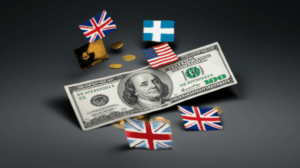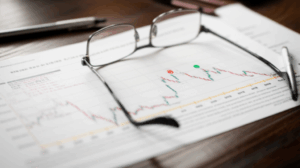Retail Outpaces Tech as Consumers Shrug Off Rates and Tariffs
In a surprising twist on conventional economic wisdom, the retail sector is currently demonstrating remarkable resilience, even outperforming the once-dominant technology industry. This unexpected shift comes despite persistent inflationary pressures, elevated interest rates, and the lingering shadow of international trade tariffs. For young adults navigating a complex economic landscape, this divergence signals a fundamental recalibration of consumer priorities and market dynamics, challenging the widely held belief that tech innovation alone dictates economic momentum. The narrative suggests that consumers, rather than tightening their belts in response to macroeconomic headwinds, are demonstrating a curious willingness to spend, particularly on goods and experiences that fall outside the traditional purview of high-growth tech.
Historically, the tech sector has been the darling of the markets, renowned for its exponential growth, disruptive innovation, and seemingly limitless potential. However, the past year has seen a significant cooling, marked by a re-evaluation of valuations, particularly for unprofitable growth companies, alongside widespread layoffs and a general slowdown in venture capital funding. Rising interest rates, designed to cool inflation, have a disproportionate impact on tech firms, whose future growth is often heavily discounted into current stock prices. Higher borrowing costs make future earnings less valuable and also deter investment in long-term, speculative projects. Simultaneously, a post-pandemic normalization of digital consumption has meant that the explosive growth seen in areas like e-commerce, streaming services, and remote work tools has moderated, making year-over-year comparisons challenging. Many tech giants are also grappling with slowing advertising revenues as businesses become more cautious with their marketing budgets, further impacting their bottom line.
Conversely, the retail sector, encompassing everything from fashion and home goods to travel and dining, is experiencing a renaissance. This isn’t merely a return to pre-pandemic norms but a robust assertion of consumer spending power that defies the prevailing economic anxieties. A significant factor contributing to this phenomenon is the concept of “revenge spending” or the prioritization of experiences and immediate gratification. After years of pandemic-induced restrictions and a pivot towards digital consumption, consumers are eager to engage in social activities, travel, and refresh their wardrobes and living spaces. This isn’t to say that consumers are entirely immune to price hikes. Rather, they appear to be selectively absorbing increased costs, particularly for items and services they value or deem essential for their quality of life. Wage growth, albeit uneven, in certain sectors has provided some buffer, allowing households to maintain spending levels despite inflation. Furthermore, some retail segments, especially discount stores and necessities, naturally thrive during periods of economic uncertainty as consumers seek value. Even luxury retail has shown surprising tenacity, suggesting a bifurcation in consumer behavior where different income brackets react differently to economic pressures.
The headline’s assertion that consumers are “shrugging off rates and tariffs” speaks volumes about current spending psychology. While higher interest rates undeniably impact mortgage payments, auto loans, and credit card debt, many everyday retail purchases are made on credit cards or directly from disposable income. Consumers may be drawing down accumulated savings from the pandemic era, or they may be adjusting their budgets elsewhere to accommodate desired retail purchases. The impact of tariffs, which effectively raise the cost of imported goods, is also being navigated differently. In many cases, businesses may absorb some of these costs to remain competitive, or consumers may simply accept slightly higher prices for products they want, especially if perceived value remains strong. Unlike the tech sector, which often relies on complex global supply chains that are highly susceptible to tariff disruptions, many retail goods have more localized supply or strong brand loyalty that mitigates price sensitivity. This doesn’t mean economic pressures are non-existent, but rather that consumers are demonstrating a selective resilience, prioritizing certain types of spending and exhibiting a remarkable adaptability to new pricing realities.
For young investors and economy watchers, this trend offers crucial insights. It underscores the importance of looking beyond conventional wisdom and understanding the nuanced drivers of consumer behavior. The outperformance of retail over tech suggests a market that is re-evaluating long-term growth stories against immediate, tangible value and experiences. It highlights the continued importance of fundamental economic indicators like consumer confidence and spending patterns, even as the global economy grapples with elevated inflation and geopolitical complexities. While tech will undoubtedly remain a vital engine of innovation and economic growth in the long run, its recent recalibration against a resilient retail sector serves as a potent reminder that economic cycles are dynamic, and consumer priorities can shift in unforeseen ways, offering both challenges and opportunities for those who understand the underlying currents.





